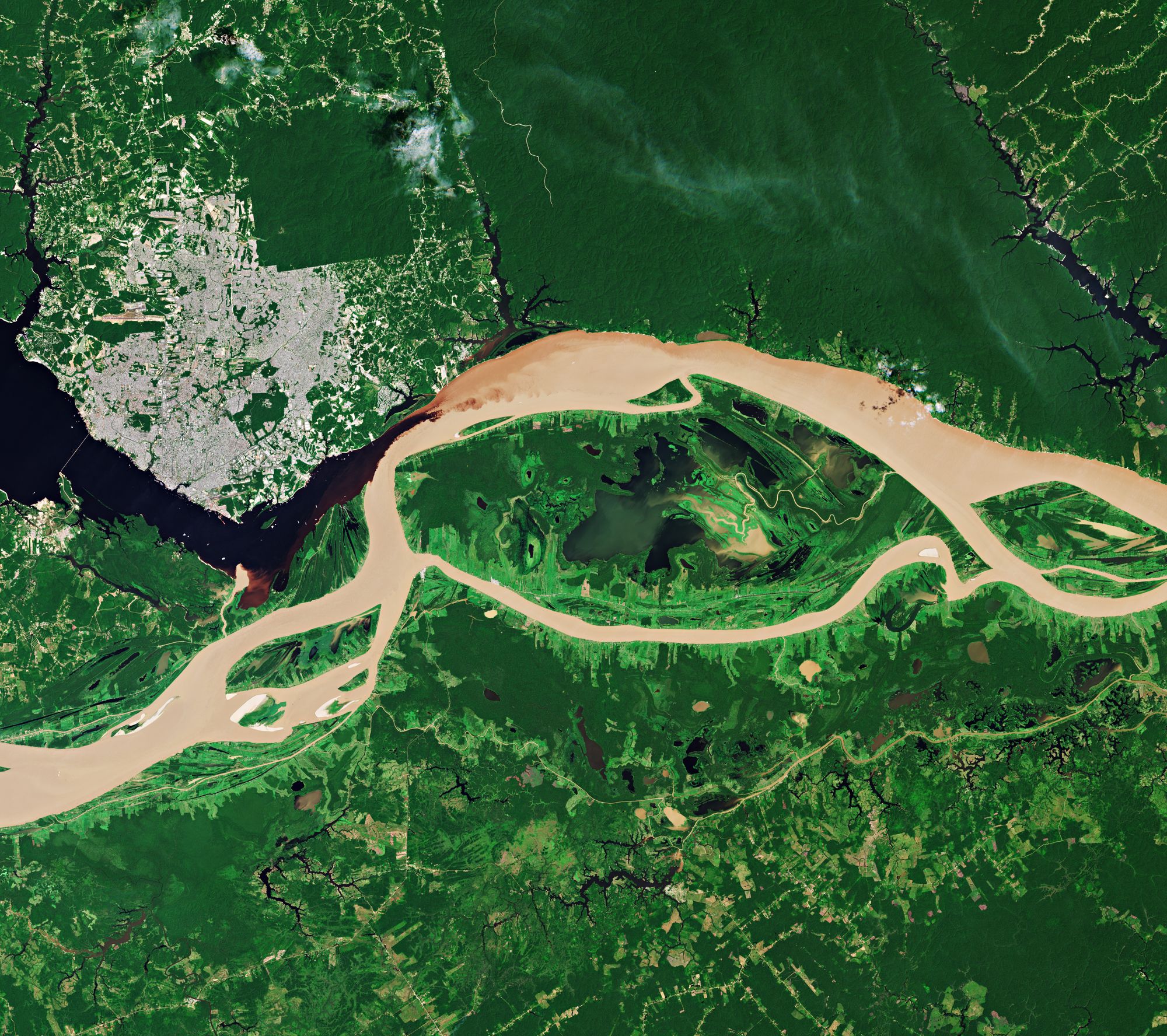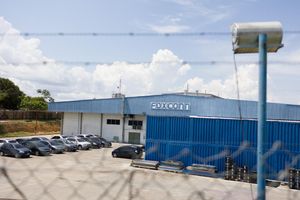At roughly 1.3 million employees, Foxconn is one of the largest private employers in the world. Its scale is astounding: Its Longhua campus, sometimes referred to as “Foxconn city,” is reportedly staffed by 450,000 employees – more than the entire population of Oakland, California.
On the other hand, Foxconn’s factory in Manaus, Brazil – a low-slung building just a couple kilometers from dense Amazon rainforest – had just a few dozen cars in the parking lot on a Tuesday morning in August.
Foxconn is not alone in Manaus: Samsung, LG, and a whole host of other multinational manufacturers have factories there. They do so at significant cost. Manaus is located in northwestern Brazil, roughly at the geographic center of the Amazon Basin, and is effectively disconnected from the rest of South America’s road and rail infrastructure. Manaus is closer to Bogota, Colombia, and Caracas, Venezuela than it is to São Paulo (Brazil’s largest city by a factor of almost two) or Brasilia (Brazil’s capital). But none of these cities are close to Manaus per se: If you started in Manaus and tried to drive to any of them, your route would pass through thousands of kilometers of rainforest, and would include multiple sections of unpaved road.
As a result, nearly all the raw materials needed to make cell phones, dishwashers, and motorcycles must be floated 1,500 kilometers up the Amazon River. And because the region around Manaus doesn’t produce most of the raw materials that manufacturers need, a shocking range of goods make this journey up the Amazon – from microprocessors to lithium-ion batteries to a wide range of staple foods. As one observer wrote, “Food, housing, fuel, medical care, indeed virtually everything that contributes to the overall cost of living, is generally higher in Manaus than for most other regions of the country.”
As isolated as it is from the rest of Brazil, Manaus is even more isolated from the rest of the world. International flights from Manaus’s airport are extremely limited: As far as I can tell, the only regular routes are to Bogota, Panama City, Fort Lauderdale, and Miami, none of which are known as key nodes in any electronics supply chain. Flights to Manaus from the People’s Republic of China (Brazil’s largest trading partner) take more than thirty-six hours, and most trips to the US (Brazil’s second largest trading partner) take well over twenty-four hours. To get from Foxconn Manaus to the company’s headquarters in Taipei could take more than 48 hours.
Manaus isn’t on the way to anything but more rainforest, and that rainforest is famously hostile to long-range planning and infrastructure, and Manaus itself isn’t a big enough market for multinational brands to want to make their widgets there. Yet for well over a century, Manaus has been a critical link between Brazil and the rest of the world.
I learned about Manaus’ manufacturing ecosystem in 2018 from my friend Dan Hui, who uncovered a few factories there while we were researching Apple’s supply chain. It has been on my mind ever since. Manaus developed as a result of the lucrative Amazonian rubber trade, which collapsed in the nineteen-teens and left Manaus as “a moribund boom-town far up the Amazon.” But the city was eventually rebuilt in a way that exploited the bizarre logic of trade policy, global supply chains, and corporate strategy – the forces that have come to define twentieth century industrial history.
To learn about Manaus is to learn about the forces that shaped modern life. The transition from hunter-gatherer societies to industrial-agricultural production; the rise of material science and synthetic chemistry; the vertical integration of industry; the tension between free trade and protectionism; the slow, deliberate, and often brutal ways that humans have literally sapped value – and life – out of the natural world.

I have been thinking about Manaus for five years. During that time I accumulated a respectable library of books on South American history and the rubber industry, with titles ranging from The Discovery and Conquest of Mexico (originally published in 1568), to Crude Rubber and Compounding Ingredients (1909), to the epic and highly informative The Devil’s Milk: A Social History of Rubber (2011). My idle curiosity has slowly morphed into a research project, leading me to seek out information that in many cases has been deeply unpleasant: the absolute decimation of pre-Columbian South American society, the brutal rubber plantation systems that developed in British Malaya and Liberia, the synthetic rubber factory that made up a significant part of the Auschwitz concentration camp.
Read the full story
The rest of this post is for paid members only. Sign up now to read the full post — and all of Scope of Work’s other paid posts.
Sign up now



